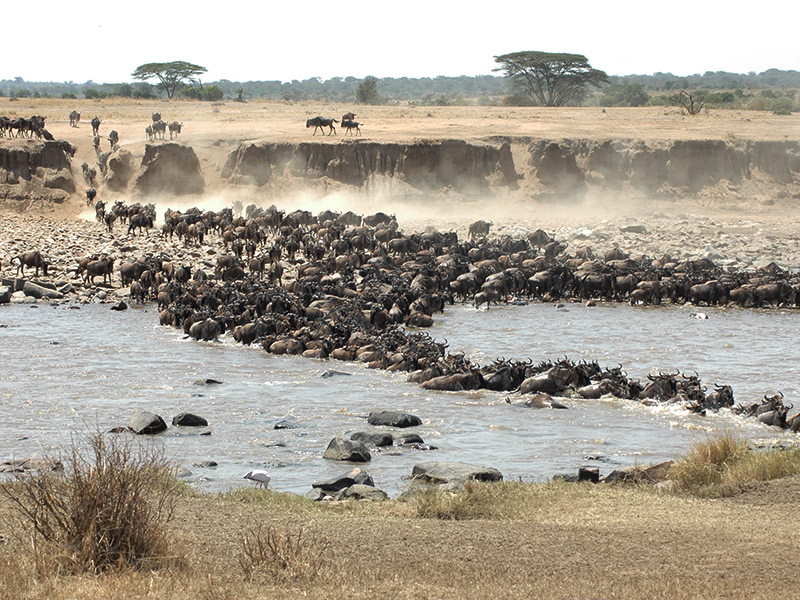The Wild Vibe of African Safaris


Serengeti is one of more than 20 Tanzania National Parks ( among Tanzania Destinations & Places to Visit ) located in the Northern circuit. One could say it is the extension of the other side of the Ngorongoro conservation area however giving it that name would have been not doing justice to it. Serengeti is well famed and visited with thousands of tourists each year and it was not a surprise that in 2019 it won the award of the best national park in the world. Serengeti earned its name not just from varieties of wild animals including the presence of the big five and the wonderful and scenery it has, but it has a history way deeper than that. Driving to Serengeti via Ngorongoro Conservation Area, you will clearly see the diversity and clearly land gestures drawing the distinct line between them. Along the way, you will notice some people in red wrap-ups holding sticks heading crowds of cattle. These people are known as Maasai belonging to the Maasai tribe one of the more than 120 tribes in Tanzania. They are famous for their nomadic lifestyle grazing cattle from place to place in search of pastures and water and this is how they arrived in Serengeti through the rift valley walking down from Egypt. At a shock on their arrival in Serengeti for the first time in their search for pastures and water, they called it Siringeti meaning a place with no end.
Apart from thousands of resident animals, Serengeti is famed for the world’s famous great migration. The wildebeest migration includes Zebras who are silent with the role of a detective agency during the migration. The zebras have the significant role of leading the group due to their excellent eyesight and great memory and route to where it is safe. The migration is estimated to be having 2.5 million wildebeest, 250,000 gazelles, and 800,000 zebras. The great migration is the year’s circle that goes around which can sometimes be affected by weather from time to time otherwise mostly it is similar throughout the years. The migration calendar starts from the southern part of Serengeti which is known as Ndutu plains. This is the special place where wildebeest would breed and cave their calves this would be from late December to Mid-April. Then they will start heading to the western plains where they will last there for few weeks for mating until July when they will be arriving at Mara river crossing over and head to Maasai Mara national game reserve, the cross always takes few weeks.
From mid-September migration moves back to Serengeti through crossing the Mara River and in November migration is expected to be near Central Serengeti or arrive at the central Serengeti then heading home for Christmas. Around December migration is expected to be at the southern plains of Serengeti where they normally synchronize birth, thus the migration will last on the southern plains for December until mid of April and start the cycle again. Thus one can see the migration in Tanzania in nine months throughout the year in Serengeti while the wildebeest are a vacation in Maasai Mara. However, there are other thousands of wildebeest which are permanent residents in Serengeti..!